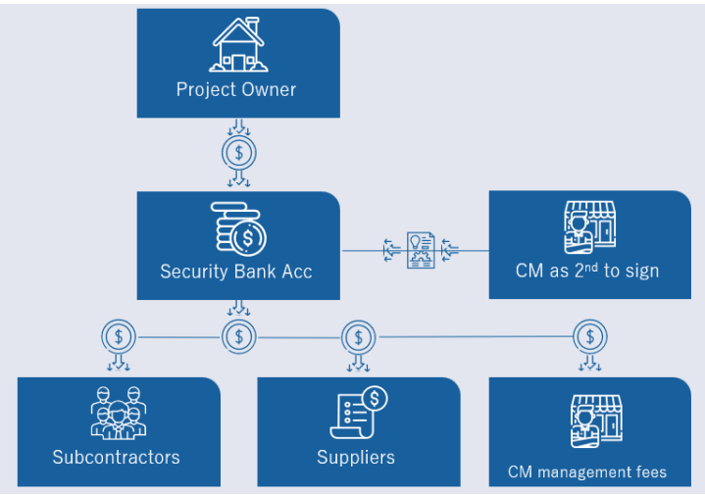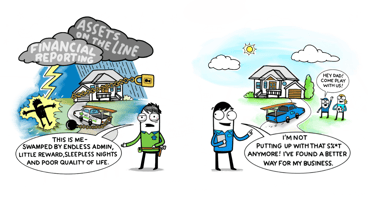As the building industry is in crisis, some concerns proposed solutions overlook the fundamental...
Unlocking Success: Proven Simple Solutions to Address Common Building Industry Issues

The building industry has long been plagued by numerous challenges, leading to financial
instability and a lack of stakeholder trust. Despite the common belief that the COVID-19 pandemic
exacerbated these problems, experts gathered at a recent Brisbane Conference organized by
FINDEX, Australia's largest diversified financial firm, confirmed that the issues run deeper than just
labour and material shortages as the cause of the industry and its customer's woes.
The prevailing consensus across various media channels suggested that unscrupulous builders accepted excessive projects fueled by government funds, aiming to sustain the industry during the pandemic.
While this approach had proven effective during the Global Financial Crisis (GFC), the
supply chains eventually crumbled, resulting in limited resources. Consequently, the scarcity of
supplies drove prices upward due to the principles of supply and demand.
This escalation eventually led to the tipping point, revealing that the root cause of the problem lay not with the
builders themselves but rather with the flawed business model that the industry has operated
under for several decades.
Historical data reveals a grim reality: large builders typically operate on a meagre net profit margin
of around 1%, while small and medium-sized enterprise (SME) builders, comprising 90% of the
domestic market (ABS), struggle to make a decent living. The building industry has faced
insolvency challenges on a global scale, with Dun and Bradstreet dubbing it the worst-performing
sector in terms of insolvencies back in 2012.
In 2015, a Senate Inquiry into the Insolvency of the building industry recommended that builders should not have complete control over the project funds, considering that a significant portion of these funds, around 80%, is owed to subcontractors and suppliers.
The panel stressed that the prevailing business model builders use, assuming control
of all project funds, creates industry stakeholders and family lives under acute stress underpinned
by high asset and cash requirements well above other industry models to support a "pay before
being paid" requirement. This, coupled with the lack of secured cash flow from project owners,
diverts builders' attention from their primary focus—constructing buildings—and leads to
diminished profitability.
It isn't the average gross profit margin of around 20% being applied by
the builder the issue; it's the cost and risk of delivering the model eroding the margin.
The conference attendees voiced their concerns over the value of some of the prevailing solutions.
One revolved around improving builders' financial management skills rather than reevaluating the
builder's role in the payment process. This was seen as particularly relevant in the SME sector as
their primary skills are in the building, not effectively, accountancy.
While some states have introduced Project Trust Accounts, which attempt to address payment
issues from the builder to the subcontractors mainly, they remain complex, particularly for smaller
builders, and increase administrative burden and cost. They do not give security or payment to
the lender or project owner. The panel agreed they are relevant if a builder receives all project
funds. But what if a builder removed itself from that?
The panel highlighted the views expressed by David Chandler OAM, the NSW building
commissioner, who suggested in a recent podcast on Build Hatch;
"We're so far into this century that technology would allow us to now enable the direct payments to go straight from the customer to the supply chain."
The conference panel unanimously agreed that the key to resolving these challenges lies in
removing builders from the burden and risk of controlling all project funds. A promising solution,
already gaining traction in the market, involves builders shifting their role to that of a construction
manager (CM) using bespoke construction management contracts relevant to the domestic
housing market and not just for large projects.

Under this model, builders offer construction services as a CM, charging a fixed management fee similar to an average profit margin. The project owner, separate from the CM, opens and maintains a Security Bank Account to initially place project fund drawdowns ahead of works, serving as the payment conduit.
The CM, acting as a second signature authority, signs that works are completed to the CM's satisfaction enabling payments to flow directly from the project owner to subcontractors and suppliers, including a CM management fee. This recommended approach offers a multitude of benefits. Firstly, it promotes transparency by clearly delineating the services and costs of all parties involved.
It also delivers direct project savings by removing the cost and risk of accounts carried by subcontractors and suppliers, eliminating the administrative burden and costs associated with builder-controlled accounts. Most importantly, it enhances security, ensuring project owners control payments, allocating funds correctly, and providing funds to stay in the project.
An essential benefit of the transparency of the project owner knowing all parties and the payments made to date is the ability to replace any defaulting party, including the CM. This is achieved through a novation of contract provision in the parent contract and subcontractors and suppliers agreements and has proven to work, avoiding the project's collapse.
In conclusion, the building industry has a proven solution to its long-standing challenges. By embracing a construction management model, wherein builders focus solely on their core competency of building and project owners assume control over payments through a Security Bank Account, the industry can achieve transparency, cost savings, and enhanced security.
It is time for the building industry to undergo a transformative shift and embrace this innovative approach for a more sustainable and prosperous future.
Peter Woods
CEO C2CPRO
Co-presenter at the FINDEX sponsor conference
peter@c2cpro.com.au
0419744418




